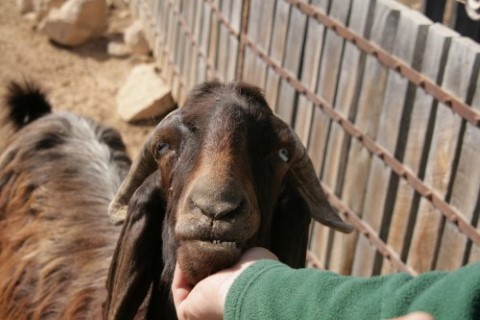The Dons, a medium-sized goat breed originating from the Don River of the Lower Volga territory in Russia, are prized for their exceptional contributions to wool, goatskin, and milk production.
Discovered in 1933-34 by an expedition of the All-Union Institute of Sheep and Goat Husbandry during studies in the former Lower Volga territory, Dons boast a strong constitution, excellent conformation, and a notable undercoat wool covering their body, neck, and belly. Their horns, large and varying in shape, are characteristic of the breed.
Predominantly black in color, though occasionally white, Don goats exhibit the highest wool production among all goat breeds. Females yield an average of 500g of wool, while bucks produce around 1015g. Unlike other cashmere breeds, Don goats have wool fibers longer than guard hairs, enhancing their wool quality.
In addition to their exceptional wool production, Don goats are valued for their milk, with an average yield of 130-140 liters during a 5-month lactation period. Notably, their milk boasts high fat content, averaging 4.6% and ranging from 3.3% to 8.2%.
Renowned for their prolific breeding, Don goats exhibit an average kidding rate of 145-150 kids per 100 females, contributing to their economic significance in the region.
Dons' goatskin, mainly used for low-grade footwear, offers good fur quality, particularly in animals slaughtered in autumn. The density and structure of their fleece, characterized by wool fibers longer than guard hairs, make them valuable in the fur industry.
The collective farm Svetly Put, located in the Oktyabr district of the Volgograd region, serves as a major enterprise for Don goat breeding. With a herd comprising 6500 goats characterized by high classification, uniformity of production type, and wool quality, the farm plays a crucial role in maintaining the breed's standards. In 1982, the farm achieved notable wool yields, with males producing up to 1160g and females yielding between 560-630g. The farm also demonstrated high fertility rates, with an average of 140-150 kids per 100 females, further solidifying the breed's significance in the region's agricultural landscape.

